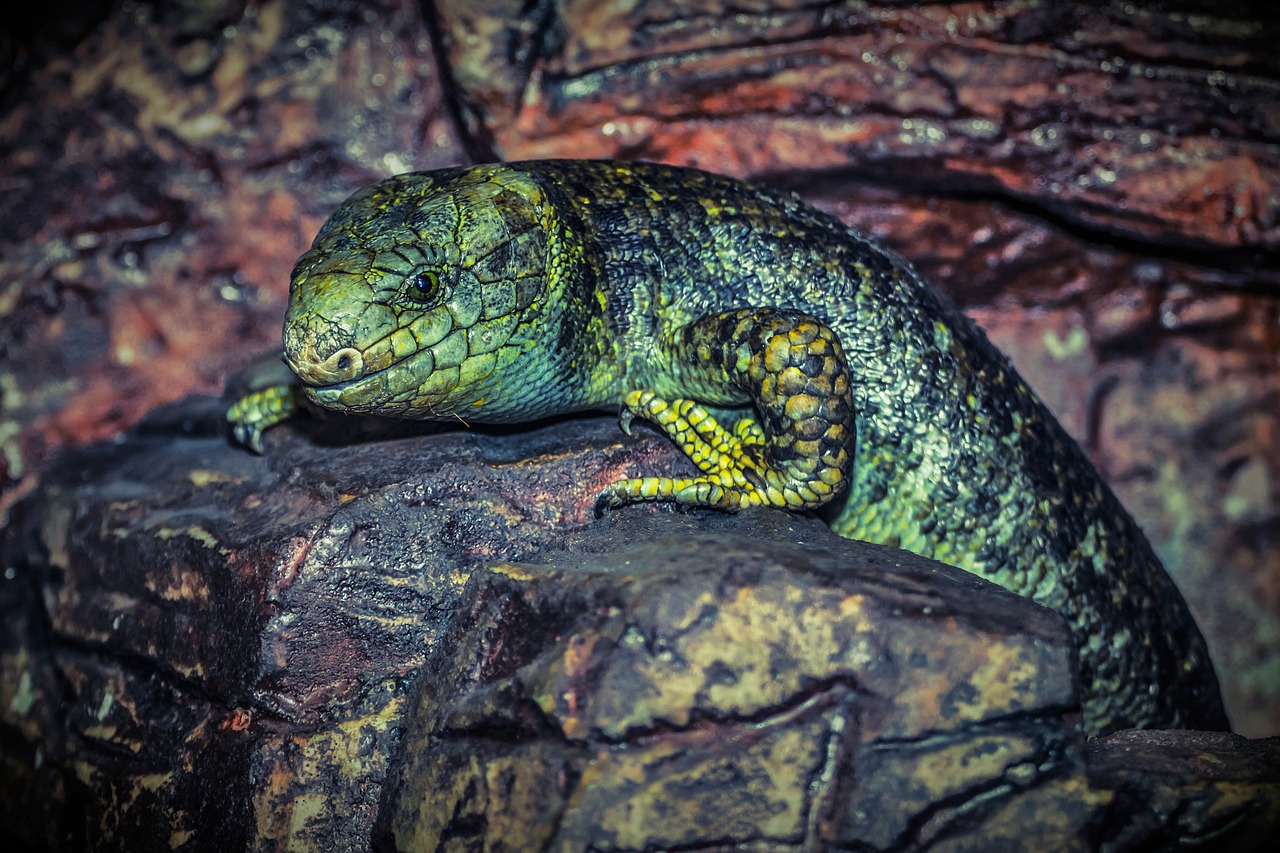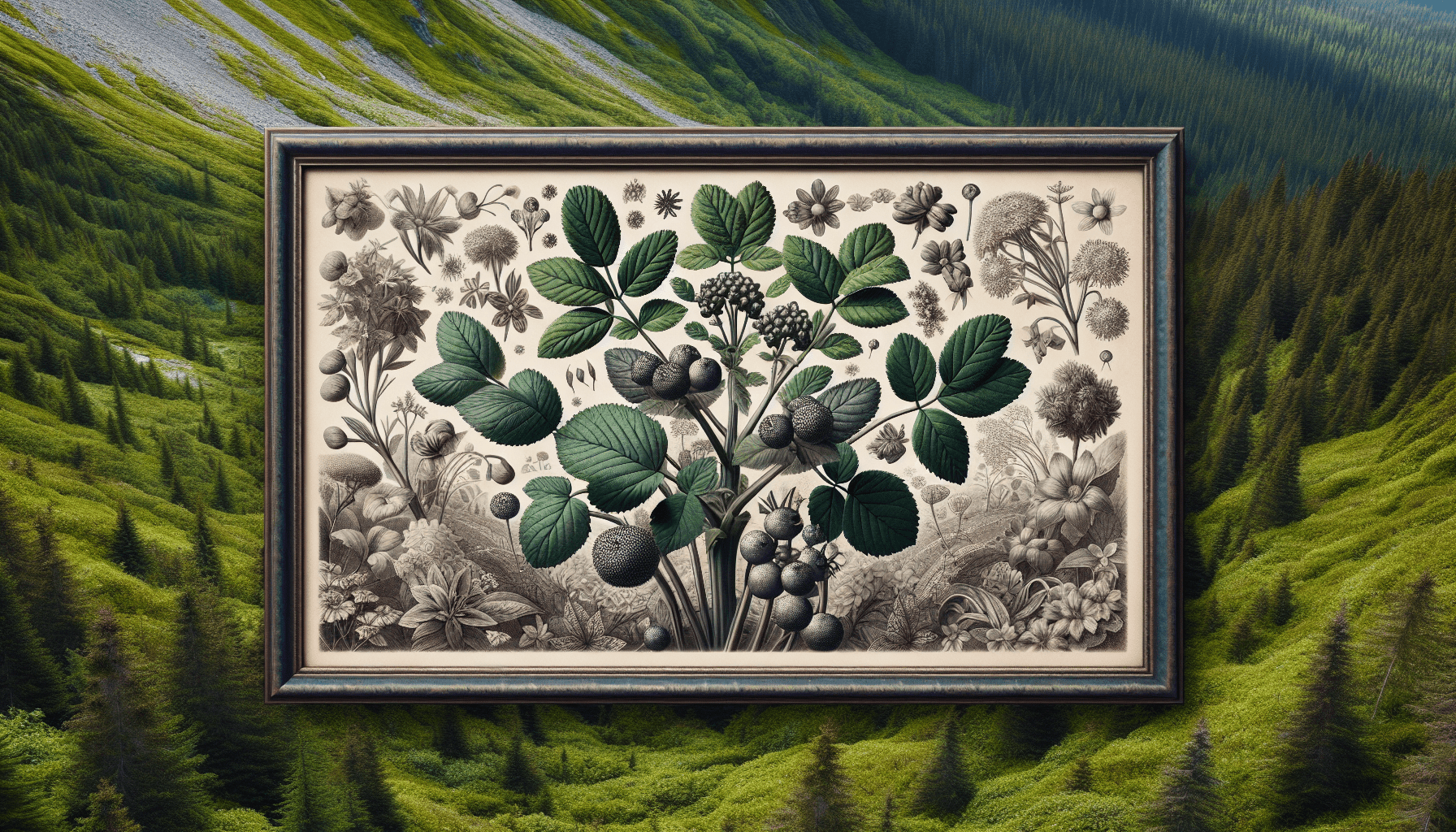Did you know that nature provides a vast array of delicious edible plants just waiting to be discovered in the wild? From tangy cranberries and sweet blueberries to savory wild onions and nutritious dandelion greens, there is a world of culinary possibilities right at your fingertips. In this article, we will explore some of the most popular edible plants found in the wild, offering you a tantalizing glimpse into the wonders of foraging for food in nature. So, grab your hiking boots and prepare to embark on a mouthwatering adventure!

Wild Berries
Blueberries
Blueberries are one of the most popular wild berries, and for good reason! These small, round berries are packed with flavor and are a favorite among both kids and adults. Not only do they taste delicious, but they are also loaded with antioxidants and are known for their potential health benefits. Blueberries can be found growing on low shrubs in forests, meadows, and even in your backyard if you’re lucky!
Blackberries
If you’re a fan of sweet and juicy berries, look no further than blackberries. These dark purple berries are a delight to eat and are commonly found growing on thorny bushes in the wild. Blackberries are not only delicious on their own but can also be used in various culinary creations like pies, jams, and smoothies. Just be careful when picking them, as those thorns can be quite prickly!
Raspberries
Raspberries are another popular wild berry that is loved for its tart yet sweet taste. These delicate berries grow on bushes and are identifiable by their vibrant red color. Like blueberries and blackberries, raspberries are loaded with antioxidants, fiber, and other essential nutrients. Whether you enjoy them fresh, in desserts, or as a topping for your morning yogurt, raspberries are a delicious and nutritious treat.
Strawberries
While most people are familiar with cultivated strawberries, wild strawberries are a hidden gem that should not be overlooked. These tiny, sweet berries grow close to the ground and can be found in forests, fields, and even in your garden if you’re fortunate enough. While their size may be small, their taste is big, and they are perfect for snacking or adding a burst of flavor to your favorite desserts.
Huckleberries
Huckleberries may not be as well-known as some of the other wild berries, but they are definitely worth trying if you come across them. These small, round berries resemble blueberries and are known for their rich and tangy flavor. They can be found growing on bushes in the wild and are commonly used in pies, jams, and syrups. If you haven’t had the pleasure of trying huckleberries, keep an eye out for them during your next outdoor adventure.
Edible Mushrooms
Morels
Morels are highly sought after by mushroom enthusiasts and for good reason. These unique fungi have a distinctive honeycomb-like appearance and a rich, earthy flavor. Morels can be found in forests, particularly near dead or decaying trees during the spring months. They are treasured for their culinary uses, and their taste can be truly transformative in dishes like pastas, risottos, and sauces.
Chanterelles
Another prized wild mushroom is the chanterelle. With their vibrant yellow or orange color and trumpet-shaped caps, these mushrooms are a feast for both the eyes and the taste buds. Chanterelles can be found in wooded areas, often near oak or pine trees. Their delicate flavor and meaty texture make them a favorite among chefs and mushroom foragers alike. You can sauté them, roast them, or add them to soups and stews for a burst of flavor.
Porcini
Porcini mushrooms, also known as cepes, are highly esteemed in the culinary world. These meaty mushrooms have a rich and nutty flavor that adds depth to any dish. Porcini mushrooms can be found in coniferous forests and are commonly associated with certain tree species like pines and firs. They are often used in Italian cuisine, particularly in dishes like risottos, pasta sauces, or simply sautéed as a side dish.
Lion’s Mane
Lion’s Mane mushrooms are not only delicious but also have a unique appearance that sets them apart from other mushrooms. These white, shaggy-looking mushrooms resemble a lion’s mane, hence their name. Lion’s Mane mushrooms can be found growing on decaying hardwood trees and logs, particularly during the late summer and fall months. They have a delicate, seafood-like flavor and are often used as a meat substitute in vegetarian dishes.
Hen of the Woods
Hen of the Woods, also known as Maitake mushrooms, are prized for their rich and savory taste. These mushrooms have large, fan-shaped clusters that resemble the feathers of a hen, hence their name. Hen of the Woods mushrooms can be found growing at the base of oak trees and are commonly found in forests. They are known for their medicinal properties and are often used in Asian cuisine, particularly in stir-fries and soups.

Wild Greens
Dandelion
While many people consider dandelions as pesky weeds, they are actually quite edible and nutritious. Dandelion greens have a slightly bitter taste but can be delicious when prepared correctly. These greens can be found in fields, lawns, and along roadsides. Dandelion greens are packed with vitamins and minerals and can be used in salads, sautéed as a side dish, or brewed into a refreshing tea.
Purslane
Purslane is a succulent plant that can often be found growing in gardens, sidewalks, and waste areas. This leafy green is known for its lemony flavor and crunchy texture. Purslane is packed with omega-3 fatty acids, vitamins, and minerals. It can be used in salads, stir-fries, or even pickled for a tangy twist. If you spot this resilient plant during your nature walks, don’t hesitate to give it a try!
Watercress
Watercress is a semi-aquatic plant that commonly grows near streams, ponds, and wetlands. This leafy green has a peppery taste and is often used in salads and sandwiches. Watercress is a nutritional powerhouse, packed with vitamins A, C, and K, as well as calcium and iron. Its vibrant green color and refreshing taste make it a favorite among health-conscious individuals and culinary enthusiasts alike.
Nettles
While often avoided due to their stinging hairs, nettles are actually a highly nutritious and versatile wild green. Once cooked or dried, the stinging properties are removed, and nettles can be used in a variety of culinary creations. Nettles can be found in damp areas, often near streams and forests. These greens are rich in vitamins, minerals, and antioxidants and can be used in soups, teas, or even made into pesto.
Plantain
No, we’re not talking about the banana-like fruit. Plantain is a common weed that can be found growing in lawns, fields, and along roadsides. This leafy green has a mild and slightly bitter taste and is often used in salads or as a cooked vegetable. Plantain is packed with vitamins A and C and is known for its potential healing properties. So next time you spot this plant in your garden, don’t dismiss it – give it a try!
Edible Flowers
Dandelion
Once again, dandelions make an appearance on our list, but this time, we’re talking about their edible flowers. Dandelion flowers are not only beautiful but also have a mild, slightly sweet flavor. These flowers can be harvested from dandelion plants found in lawns, meadows, and fields. Dandelion flowers can be used to make jellies, syrups, or even fermented into dandelion wine. They also make a lovely addition to salads or can be used to garnish desserts.
Violets
Violets are not only known for their vibrant purple and blue colors but also for their delicate and sweet flavor. These edible flowers can be found growing in wooded areas, meadows, and even in your garden if you’re lucky. Violets can be used to decorate cakes, infused into syrups, or added to salads for a pop of color. They also make lovely candied treats or can be used to create floral tea blends.
Nasturtiums
Nasturtiums are not only beautiful but also incredibly flavorful. These brightly colored flowers come in a variety of shades, from vibrant oranges and yellows to deep reds. Nasturtiums have a peppery and slightly spicy taste, similar to watercress. They can be used in salads, added to sandwiches, or even used as a garnish for savory dishes. Nasturtium flowers also make an excellent addition to vinegars or infused oils.
Daylilies
Daylilies are not only admired for their stunning blooms but are also considered a delicacy in many cultures. These flowers come in various colors and have a slightly sweet and earthy flavor. Daylilies can be found growing in gardens, meadows, and along roadsides. They can be used in salads, stir-fries, or even battered and fried for a unique treat. Just make sure you’re not confusing daylilies with other potentially toxic varieties.
Chrysanthemums
Chrysanthemums are famous for their vibrant and eye-catching flowers. These edible blooms can come in a range of colors, from bright yellows and oranges to soft pinks and whites. Chrysanthemums have a slightly bitter taste, reminiscent of their leaves. They can be used in salads, teas, or even infused into spirits and cocktails. Chrysanthemum flowers are not only visually appealing but also add a unique flavor profile to any dish or beverage.

Wild Nuts
Acorns
While often associated with squirrels, acorns are actually edible and have been a food source for many cultures throughout history. Acorns can be found under oak trees, and they require some processing before they can be consumed. Once the bitter tannins are removed, acorns can be ground into flour or used as a nutty ingredient in various dishes. They can be roasted, boiled, or even used to make desserts like acorn cookies or cakes.
Walnuts
Walnuts are a well-known and beloved nut that can be found growing on trees in many parts of the world. These delicious nuts have a rich and buttery flavor and can be used in both sweet and savory dishes. Walnuts can be enjoyed on their own as a healthy snack, added to salads for a crunchy texture, or incorporated into baked goods like brownies, cookies, and bread. They are also a great source of omega-3 fatty acids and other essential nutrients.
Hazelnuts
Hazelnuts, also known as filberts, are widely recognized for their distinctively sweet and nutty flavor. These small, round nuts are a popular ingredient in chocolates, spreads like Nutella, and various desserts. Hazelnuts can be found growing on hazel trees and are widely harvested for commercial use. They can be enjoyed roasted, raw, or used in recipes like baklava, cookies, or savory dishes like roasted vegetables or salads.
Chestnuts
Chestnuts are a delicious and versatile nut that can be enjoyed in a variety of ways. These nuts have a mildly sweet and starchy flavor and are often associated with the holiday season. Chestnuts can be found growing on trees in temperate regions and are popularly roasted or used in stuffing, soups, and desserts. They can also be ground into flour and used as a gluten-free alternative in baking.
Pine Nuts
Pine nuts, also known as pignoli, are small, elongated nuts that come from pine trees. These nuts have a delicate and buttery flavor and are commonly used in Mediterranean and Middle Eastern cuisines. Pine nuts can be enjoyed in a variety of dishes, including pesto, salads, pastas, and desserts like baklava and cookies. They are a rich source of healthy fats, protein, and essential minerals.
Edible Roots
Wild Carrots
Wild carrots, also known as Queen Anne’s lace, are the wild ancestors of the familiar orange carrots we find in grocery stores. These root vegetables have a mild and slightly sweet flavor, similar to cultivated carrots. Wild carrots can be found in open fields, meadows, and along roadsides. They can be cooked as a vegetable, added to soups and stews, or used in salads. Just be cautious and ensure proper identification, as some wild carrot varieties can be toxic.
Burdock
Burdock is a root vegetable that is revered for its earthy flavor and medicinal properties. This plant can often be found growing in fields, along roadsides, and in disturbed areas. The root of the burdock plant is commonly used in Asian cuisine, particularly in stir-fries, soups, and teas. It can also be pickled or roasted as a side dish. Burdock root is believed to have various health benefits, including supporting liver function and promoting detoxification.
Stinging Nettle
While the leaves of stinging nettles may seem intimidating due to their stinging hairs, the roots are edible and have a unique earthy flavor. Stinging nettles can be found in woodlands, meadows, and near water sources. The roots of this plant can be cooked as a vegetable, brewed into a tea, or even dried and ground into a powder for various culinary uses. Stinging nettle roots are believed to have medicinal properties and are commonly used in traditional herbal medicine.
Wild Ginger
Wild ginger is a root that has a spicy and aromatic flavor, reminiscent of its cousin, common ginger. This plant can be found in shady, moist areas, such as forests and riverbanks. Wild ginger can be used in cooking to add a warm and peppery flavor to dishes like soups, stews, and stir-fries. It can also be brewed into a tea or used as a seasoning for desserts. Wild ginger is not only flavorful but also has a long history of medicinal use.
Wild Onions
Wild onions, also known as ramps or wild leeks, are a popular wild edible that have a savory and garlicky flavor. These pungent plants can be found growing in wooded areas, particularly in moist, shaded environments. Wild onions can be used in a variety of dishes, including salads, sautés, and soups. They can also be pickled or used as a flavoring agent in marinades or dressings. Wild onions are a highly sought-after delicacy when it comes to foraging for wild edibles.

Edible Seeds
Sunflower Seeds
Sunflower seeds are not only a tasty snack but also an excellent source of healthy fats, protein, and essential nutrients. These seeds can be found within the familiar sunflower heads and are commonly harvested for consumption. Sunflower seeds can be enjoyed roasted, salted, or used as an ingredient in various dishes. They can be added to salads, granola bars, baked goods, or even ground into a butter-like spread.
Pumpkin Seeds
When carving your Halloween pumpkin, don’t forget to save the seeds! Pumpkin seeds, also known as pepitas, are a delicious and nutritious snack. These seeds can be found within the pumpkin’s fibrous pulp and are often separated, rinsed, and roasted. Pumpkin seeds can be enjoyed on their own as a crunchy snack, added to trail mixes and granolas, or used as a topping for salads and soups. They are also a good source of healthy fats and protein.
Flax Seeds
Flax seeds are a popular superfood known for their high fiber and omega-3 fatty acid content. These small, brown seeds have a slightly nutty flavor and can be found within the seed pods of the flax plant. Flax seeds can be ground and added to smoothies, cereals, baked goods, or used as an egg substitute in vegan recipes. They are also commonly used to make flaxseed oil, which is valued for its nutritional properties.
Chia Seeds
Chia seeds are packed with nutrients and have gained immense popularity in recent years. These tiny seeds come from the Salvia hispanica plant and have a neutral flavor. Chia seeds can be soaked in liquids to create a gel-like consistency, making them a versatile ingredient in puddings, beverages, and baked goods. They can also be sprinkled over yogurt, oatmeal, or salads for an added nutritional boost.
Sesame Seeds
Sesame seeds are a versatile ingredient used in various cuisines around the world. These small, oval-shaped seeds come from the sesame plant and are available in both white and black varieties. Sesame seeds have a nutty flavor and can be sprinkled on top of bread, pastries, and other baked goods. They can also be ground into tahini, a paste commonly used in Middle Eastern cuisine, or used as a coating for fried foods.
Wild Herbs
Wild Mint
Wild mint is a refreshing and aromatic herb that can be found growing in moist environments, such as streams, ponds, and meadows. This herb has a cooling effect and a strong minty flavor that is perfect for teas, desserts, and savory dishes alike. Wild mint can be used fresh or dried and added to beverages like iced tea or lemonade. It can also be incorporated into salads, marinades, and even homemade mint chocolate chip ice cream!
Oregano
Oregano is a staple herb in many Mediterranean and Italian dishes, but did you know that it can also be found growing wild? Wild oregano has a similar flavor profile to its cultivated counterpart but often has a more intense and robust taste. This herb can be used fresh or dried in various recipes, including pasta sauces, pizza, salads, and marinades. Oregano is not only delicious but also has potential health benefits, including antimicrobial properties.
Basil
Basil is a fragrant and versatile herb that is widely used in many cuisines, particularly Italian and Thai. Wild variations of basil can be found growing in meadows, fields, and along sunny riverbanks. Basil has a sweet and slightly peppery flavor that pairs well with tomatoes, cheese, and various meats. It can be used in salads, sauces, stir-fries, or even made into pesto. Basil is also known for its potential anti-inflammatory and antioxidant properties.
Thyme
Thyme is a popular herb known for its earthy and slightly minty flavor. Wild thyme can be found growing in dry, rocky areas, such as hillsides and cliffs. This herb is a staple in Mediterranean cuisine and can be used in a variety of recipes, including soups, stews, roasted meats, and vegetables. Thyme is also known to have antibacterial properties and is often used in natural remedies for coughs and sore throats.
Parsley
Parsley is a versatile herb often used as a garnish or flavoring agent in culinary creations. Wild parsley can be found growing in grasslands, meadows, and along roadsides. While it may resemble its cultivated counterpart, wild parsley often has a more intense flavor. It can be used as a fresh herb in salads, sauces, and marinades, or dried for later use. Parsley is not only a culinary delight but also a great source of vitamins, minerals, and antioxidants.

Edible Cacti
Prickly Pear
Prickly pear cactus, also known as nopales, is a unique and nutritious plant that can be found in arid regions of the Americas and Mediterranean countries. Prickly pear pads, or cladodes, are edible and have a slightly tart and citrus-like flavor. They can be harvested, cooked, and added to salads, stir-fries, or even used as a topping for tacos. Prickly pear fruits, known as tunas, are also edible and can be enjoyed fresh or used to make jams, jellies, or beverages.
Barrel Cactus
Barrel cactus is a type of cactus that is often associated with desert landscapes. While it may not be as common as some other edible cacti, it is worth mentioning for its potential as a food source. The inner pulp of barrel cactus can be eaten raw or cooked and has a watery and slightly sweet taste. It can be used in various dishes, such as salads, salsas, or as an addition to soups. Just be cautious when harvesting and preparing barrel cactus, as they have spines that can cause injury.
Cholla
Cholla cactus is another edible cactus that can be found in arid regions, particularly in the Southwestern United States and Mexico. The young segments of cholla cactus, known as buds, are the most commonly harvested part. They can be boiled or roasted and have a mild and slightly tangy flavor. Cholla buds can be used in stews, soups, or even pickled for later use. Just like with other cacti, caution should be exercised when handling, as cholla cactus has spines that can be sharp.
Nopalitos
Nopalitos, or prickly pear cactus pads, are a staple ingredient in Mexican cuisine and are becoming increasingly popular around the world. These edible pads can be harvested from certain species of prickly pear cactus and have a mild and slightly tangy taste. They can be cooked and used in various dishes, including tacos, salads, omelets, and even made into refreshing beverages. Nopalitos are known for their high fiber content, as well as their potential health benefits.
Agave
While most people are familiar with agave as a source of sweetener or tequila production, few may know that parts of the agave plant are edible as well. The young shoots from certain species of agave can be harvested and used in cooking. These shoots have a crisp texture and a mild, slightly sweet taste. They can be boiled, roasted, or used in stir-fries and salads. Agave shoots are a traditional food source in certain cultures and are highly valued for their nutritional benefits.
Edible Seaweeds
Nori
Nori is a type of seaweed commonly used in sushi rolls and other Asian dishes. It is made by pressing and drying sheets of seaweed that have been harvested from the ocean. Nori has a savory and slightly salty flavor that adds depth to various recipes. Besides its use in sushi, nori can be used to wrap rice balls, stir-fried, or even crumbled over salads and soups. It is a rich source of iodine, antioxidants, and other beneficial nutrients.
Kombu
Kombu is a versatile and nutrient-rich type of seaweed that is heavily utilized in Japanese cuisine. This brown seaweed is known for its natural sweet and savory flavor, as well as its ability to enhance the taste of other ingredients. Kombu can be used to make flavorful broths, added to soups and stews, simmered with beans or grains, or used as a natural flavoring agent. It is also a good source of minerals, including iodine and potassium.
Dulse
Dulse is a red seaweed that has been gaining popularity as a superfood in recent years. This seaweed has a unique texture, similar to thin and crispy leaves, and a umami flavor profile with hints of sea salt. Dulse can be enjoyed in various ways, such as snacking on it raw, adding it to salads, or using it as a flavorful seasoning. It can also be roasted or used as a topping for soups, sandwiches, and even popcorn. Dulse is known for its high mineral content, vitamins, and antioxidants.
Wakame
Wakame is a brown seaweed commonly used in Japanese cuisine, particularly in soups and salads. This seaweed has a delicate and slightly sweet flavor, making it a popular choice for adding depth to dishes. Wakame can be soaked and added to miso soup, stir-fried, or even used as a topping for sushi rolls. It is a good source of vitamins A and C, as well as minerals like calcium and magnesium.
Irish Moss
Irish Moss, also known as sea moss, is a type of red seaweed that is known for its gelatinous texture and nutritional value. This seaweed has a neutral flavor and can be used as a thickening agent in various recipes, such as desserts, smoothies, and sauces. It is also used in traditional Irish cuisine to make a nutrient-rich gel called “carrageen moss.” Irish Moss is a great source of minerals, dietary fiber, and antioxidants.
In conclusion, the world of wild edibles is full of flavors and possibilities. From juicy berries and savory mushrooms to nutritious greens and exotic cacti, nature provides us with a wide variety of edible plants to explore and enjoy. However, it is important to exercise caution when foraging for wild plants, ensuring proper identification and sustainable harvesting practices. With a bit of knowledge and a sense of adventure, you can embark on a culinary journey through the wild and discover the delights that nature has to offer. Happy foraging!
